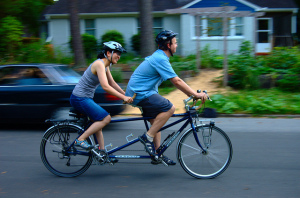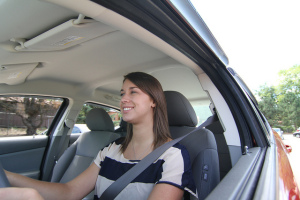An off-duty Ocala Police officer was killed late Thursday night after he was ejected from his Harley-Davidson motorcycle.
The 43-year-old man was traveling west on SW 95th Street Rd. when his white motorcycle suddenly veered left and traveled across the center median while spinning and then falling onto its side. The motorcycle continued to slide across the median and came to rest in the eastbound lanes, a Florida Highway Patrol report states.
The man was ejected from the motorcycle and also ended up in the eastbound lanes of SW 95th Street Rd. He was transported to Ocala Regional Medical Center, where he succumbed to his injuries, the FHP report says.
An ejection from the motorcycle is a common pathway to injury or fatality, because when the bike comes to a sudden stop, there is nothing affixing the rider to the bike. Also, the rider can forcibly strike any objects within the pathway of the ejection – as well as the ground.
Ocala, and the rest of the state of Florida, is beautiful pretty much year-round for motorcycle riders everywhere. With plenty of roads, attractive scenery, and gorgeous weather, Florida is a mecca for motorcyclists, as well as other tourists. But with more bikers on the roads, this also means more injuries. Motorcycle accidents tend to be more catastrophic than passenger car accidents because motorcycles lack the protection of a metal frame that cars have.
When a person is ejected from a motorcycle, serious injuries and death can easily occur. Since motorcycles have no seatbelts, roof, or doors to contain riders and passengers, nearly any motorcycle accident can result in ejection injuries. Riders without helmets are much more likely to suffer fatal injuries during accidents that result in ejection than riders that wear helmets.
When drivers and passengers are ejected from a motorcycle, the impact usually injures the head and neck. Motorcyclists can also easily collide with stationary objects that are in the path of the collision, which can result in more serious ejection injuries. Back and spinal cord trauma can also occur from ejection injuries due to the fact that the spine often becomes compressed during the ejection impact. However, any part of the body can be injured during a motorcycle ejection crash. It really all depends upon the way that the rider falls.
Injuries that are commonly suffered during a motorcycle ejection include:
- Broken bones
- Lacerations
- Severe foot and leg injuries
- Amputations
- Traumatic brain injuries
- Paralysis injuries
- Concussions
- Eye and facial injuries
A motorcycle collision can cause extreme violence to riders and passengers. More than 80 percent of traffic accidents involving motorcycles result in either injuries or death to the motorcyclist. As we mentioned before, motorcycles offer no protections to its driver or passengers. There is nothing to prevent the riders from being thrown off the motorcycle in the event of an accident. When ejected, the rider is quite likely to be injured again when hitting the ground or any other obstacle in the rider’s path of flight, including walls, trees, signs, other cars, etc.
There are many different types of motorcycle crashes, and some are more common than others. Here are the top ten reasons for motorcycle crashes:
- Unsafe lane changes
- Car doors opening
- Inexperienced drivers
- Driving under the influence of drugs or alcohol
- A sudden stop
- Left turn accidents
- Speeding
- Lane splitting
- Head-on collisions
- Road hazards
If you are a motorcyclist, there are preventative measures you can take to eliminate the possibility of a crash. You should wear a helmet, wear bright clothing, and invest in reflectors that shine brighter when illuminated by headlights. You should also limit the number of times you weave between lanes when traffic is stalled, as distracted drivers that are not paying attention can easily change lanes unexpectedly and strike you and your bike.
Our Ocala Motorcycle Injury Attorneys at Whittel & Melton also recommend the following to prevent tragic accidents:
- Ride with a group to improve visibility
- Avoid lane-splitting
- Avoid riding on unfamiliar surfaces, such as gravel, loose asphalt, potholes, oil slicks, and other debris
- Always ride defensively
- Do not ride above your skill level. Take a safety course or refresher class to help improve your skill level.
 Florida Personal Injury Lawyers Blog
Florida Personal Injury Lawyers Blog






